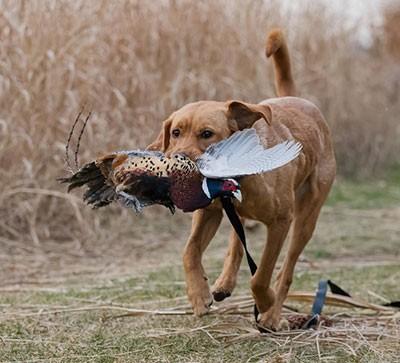
Bird dogs, also often referred to as gun dogs, are regarded for their ability to assist hunters during bird-hunting expeditions. Learning how to train a bird dog goes beyond conventional obedience. You will need to cultivate skills essential for a successful and enjoyable hunting experience. Training a bird dog involves a combination of basic obedience training and specialized skills for hunting.
When to Start Training
You can start training a bird dog as early as 6 months as a general rule of thumb. However, we can’t exactly say a specific age. Each dog has to be measured on an individual basis to see if the dog is ready for training.
The answer to any question: It depends on the dog.
Michael Ellis – Internationally renowned dog trainer
Starting training during the puppy stage helps create a foundation level that helps shape behaviors, instill obedience, and cultivate the innate hunting instincts of your future companion. Puppies are like sponges. They absorb information and experiences that will shape their character and skills. The early investment in training establishes a strong bond between you and your puppy and lays the groundwork for a disciplined and proficient bird dog for years to come.
During the puppy stage, you should focus on gentle introductions to basic commands, socialization, and positive reinforcement. Building a solid foundation in these formative months sets the stage for more advanced training as your bird dog matures. This guide will take you through the comprehensive process of training your bird dog, from basic obedience to advanced hunting skills. Remember, the key is patience, positive reinforcement, and consistency.
Start with Basic Obedience
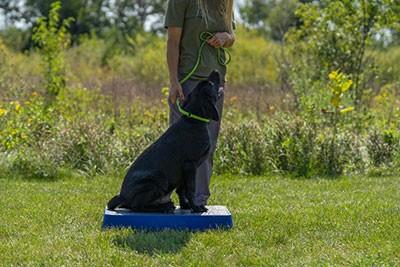
You can start with teaching basic commands such as sit, stay, come, and heel. These commands form the foundation for more advanced training. Training begins with the establishment of a robust foundation through basic obedience. In this critical stage, the focus is on instilling key commands to serve as the building blocks for more advanced training.
Sit
Teach your bird dog the “sit” command to instill the concept of stillness and attentiveness. This command aids in maintaining control during various scenarios and sets the stage for more advanced commands.
Stay
The “stay” command is important for ensuring your bird dog remains in a designated position until given further instructions. This is especially useful in hunting scenarios where stillness is necessary for success.
Come
The “come” command is for recalling your bird dog. This command helps build responsiveness and reinforces a strong bond with the trainer. A reliable recall is indispensable in the field, especially when navigating varied terrains.
Heel
The “heel” command establishes the concept of walking closely beside you without pulling on the leash. This helps promote leash manners and ensures your bird dog stays focused and responsive during walks and hunts.
It is important to note that obedience training is a crucial foundation for dogs. Never rush obedience training because these commands are the building blocks of both starting and finishing gun dog training. Starting advanced training with a weak foundation can result in the dog never reaching its full potential as a hunting companion.
For more information, you can check out our blog post on Basic Obedience Training for Gun Dogs.
Socialization Techniques: Nurturing a Well-Adapted and Socially Proficient Bird Dog
Socialization is indispensable to bird dog training. It goes beyond mere familiarity with commands and maneuvers. It involves introducing your bird dog to other dogs, other animals, other people, and diverse environments. A well-socialized bird dog is an asset in the hunting field and a delight in various social settings.
Boring socialization can be a good socialization. It’s hours of boredom punctuated with moments of sheer terror.
Chad Mackin – Dog trainer
Introduction to Birds
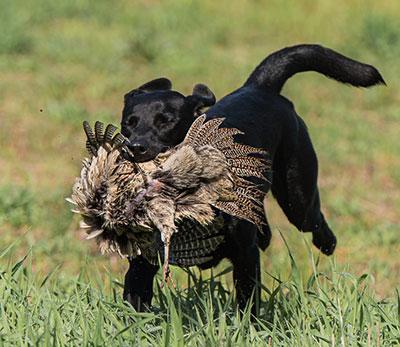
The introduction of your gun dog to the scent of birds marks a transformative stage in their training. It taps into their innate hunting instincts. This process is not merely about acquainting them with scents; it’s about awakening a primal connection to their future quarry. From scented objects to lifelike bird-shaped dummies, these tools introduce your dog to birds in a controlled environment before they encounter the real thing.
Once dogs are comfortable with holding the training dummies, you can start with an actual bird. Introduce a frozen bird to your dog. Make sure that the bird is slightly thawed out for your dog to have a spot to properly grab it. This process will make the dog used to picking up birds. Initially, the dog might botch it before having a perfect hold on it. Be patient. Don’t rush things.
Teach Retrieving: Developing Precision and Eagerness in Retrieval Skills
The retrieving skill is a cornerstone in transforming your bird dog into an adept hunting companion. This skill enhances the dog’s instincts and contributes to a seamless and efficient hunting experience.
Basic Retrieving Exercises:
- Soft Toys and Retrieving Dummies
Start retrieving exercises with soft toys or retrieving dummies. Encourage your dog to fetch and return these items by using positive reinforcement to associate the act of retrieving with enjoyment. Soft toys and retrieving dummies serve as gentle initiators to the retrieving skill. Positive reinforcement, in the form of praise, affection, and treats, is key to transforming the act of retrieving into a delightful experience. This also reinforces the desire to repeat the behavior.
As your dog gains confidence in their abilities, the progression from soft toys to specialized retrieving dummies introduces a more realistic feel. This helps prepare them for retrieving actual game birds in the future. The diversity in objects and playful interaction during retrieval sessions refine their skills and strengthen the bond between you and your canine companion. Consistency in routine further solidifies the positive association making training more effective.
- Introduce Consistent Retrieving Commands
When introducing retrieving commands to your bird dog, the key is to create a language of communication that transcends the physical act of retrieving. Beyond the fundamental actions, employing consistent commands such as “fetch” or “retrieve” becomes the crux in building a shared vocabulary that enhances precision and responsiveness in your gun dog.
- Positive Reinforcement
Always utilize positive reinforcement. Incorporating treats is a cornerstone of dog training. On top of treats, you can praise your bird dog and offer other rewards for successful retrievals. This positive association fosters eagerness and enthusiasm in your bird dog during retrieval training exercises. Essentially, this encourages your bird dog to approach each fetching task with a positive attitude.
Introduction to Guns
Introducing your bird dog to the sound of gunfire is a delicate yet crucial aspect of their training. A bird dog not trained around guns may lose their composure during hunts. Begin this process gradually. Expose them to distant sounds of gunfire. As your dog becomes more accustomed and comfortable with the auditory stimuli, incrementally decrease the distance to the source of the sound. This progressive approach allows your dog to acclimate at their own pace. This helps gradually build confidence while minimizing stress. Observe their reactions closely. Make sure they remain composed and focused.
Field Training: Nurturing the Instincts of Finding and Pointing
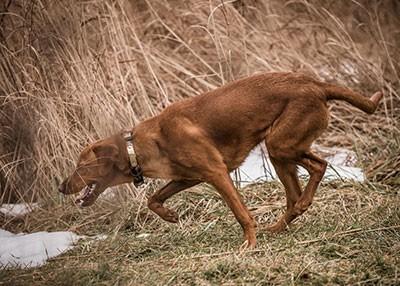
Field training is the next phase in transforming your bird dog from a novice to a seasoned hunting companion. In this immersive experience, the focus shifts to the dynamic and natural environment where your dog will ultimately showcase their hunting prowess. Begin by bringing your dog to an open field. This will be the avenue for them to find and point at birds. This can take various forms. You can start with strategically planted birds for training exercises and later move on to discovering naturally occurring birds in their environment.
This training phase serves as a bridge between theoretical learning and practical application. Observe your dog as they engage in the exhilarating pursuit of finding and pointing.
Retrieving Birds: Integrating Precision into the Hunt
Having established a solid foundation in finding and pointing at birds during field training, the next phase of your bird dog’s development seamlessly integrates the art of retrieving. As your dog becomes increasingly more adept at identifying and indicating the presence of birds, the introduction of retrieving refines their hunting skills and elevates the entire hunting experience. When your dog instinctively points at a bird, a crucial moment in the hunting pursuit, implement the retrieve command with clarity and consistency.
This command becomes a bridge between their innate instincts and your guidance that creates a synchronized language that transforms the anticipation of the point into a purposeful retrieval. As your dog retrieves the bird back to you, reward this accomplishment with enthusiasm by using a combination of treats, praise, and play. This reinforcement solidifies the positive association with retrieving and intensifies the bond between you and your canine partner. This integration of retrieving into the hunting equation represents a harmonious blend of training, instinct, and the shared joy of a successful hunt which is a milestone in the development of a truly exceptional bird dog.
Advanced Training: Elevating Skills in Varied Environments
As your bird dog progresses through the foundational phases of training, the transition to advanced training becomes essential in honing their skills for the diversity of challenges encountered in the field. Gradually elevate the complexity of training scenarios to improve their adaptability and responsiveness. Introduce distractions, varying terrains, and simulate real hunting situations to mimic the unpredictability of the hunting environment. This advanced training helps sharpen their abilities and fosters versatility integral to a successful hunting partnership.
Consistency and Positive Reinforcement: Building a Foundation of Trust and Understanding
Consistency is the core of effective training. Maintain a steady and predictable training routine, reinforcing commands, and behaviors consistently. Positive reinforcement remains a cornerstone, utilizing treats, praise, and play to reward and reinforce good behavior. With consistency, you can create a constructive atmosphere and build a foundation of trust and understanding between you and your bird dog.
Positive training puts the emphasis on teaching dogs what to do, not continually punishing a dog for not doing what we want.
Victoria Stillwell – Dog trainer/Author
Developing Stamina: Endurance for the Hunt
The demands of a day in the field necessitate that bird dogs possess sufficient stamina. You can build your bird dog’s stamina by gradually increasing the distance and duration of training sessions. This incremental approach conditions their physical stamina and also helps develop mental fortitude for sustained focus and performance during extended hunting expeditions. If you cultivate stamina through thoughtful and gradual increments, you can ensure that your bird dog is well-prepared for the hunt. With enough stamina, your canine companions are capable of maintaining peak performance throughout the entirety of your hunting adventures.
First of all, when you run a dog that is short on stamina, you gotta run him at the right times of day. No dog has a lot of energy in the heat, and that’s why timing is so important.
Al Arthur – Two-Time Open Retriever National Champion
Hunting Simulations: Crafting Realistic Environments for Peak Performance
In your quest to transform your bird dog into an accomplished hunting companion, the integration of hunting simulations is pivotal. It will help elevate training to a level that mirrors the authenticity of actual hunting conditions. This advanced phase involves creating meticulously crafted scenarios that encapsulate the diverse challenges encountered in the field. This helps fortify your bird dog’s adaptability and proficiency. Start by varying the types of birds introduced during simulations, exposing your dog to a spectrum of scents, sizes, and behaviors representative of the game they may encounter in the wild.
Terrain variation is equally crucial, as different landscapes demand distinct navigational and scent-tracking skills. From open fields to wooded areas, each environment poses unique challenges that contribute to a well-rounded hunting skill set. Additionally, incorporating diverse weather conditions, such as rain or wind, further refines your bird dog’s ability to perform optimally under a range of circumstances.
Raising a Skilled Hunting Companion
Training a bird dog is a continuous process that requires dedication, patience, and consistency. As you progress through each stage, don’t forget to celebrate small victories and embrace challenges as opportunities for growth. With the right approach, you can mold your bird dog into a reliable and skilled hunting partner for many years.


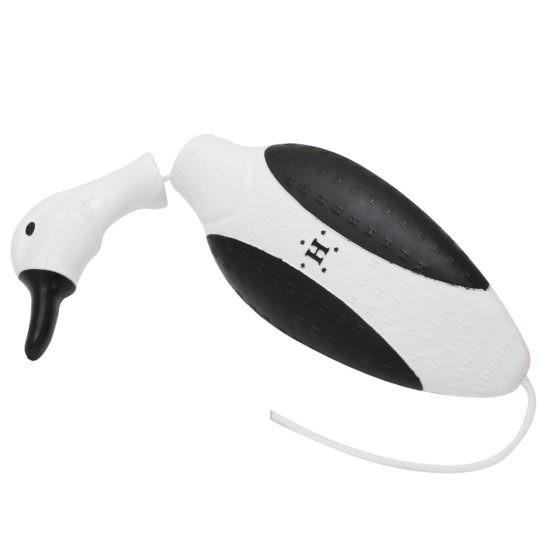




Leave a Reply